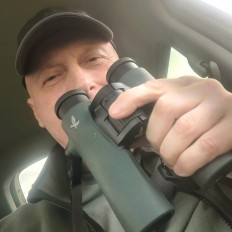Top species
- Ferruginous Duck (Aythya nyroca)
- Wood Sandpiper (Tringa glareola)
- Spotted Redshank (Tringa erythropus)
- Common Greenshank (Tringa nebularia)
- Whiskered Tern (Chlidonias hybrida)
- White Stork (Ciconia ciconia)
- Black-crowned Night Heron (Nycticorax nycticorax)
- Squacco Heron (Ardeola ralloides)
- Western Cattle Egret (Bubulcus ibis)
- Purple Heron (Ardea purpurea)
- Glossy Ibis (Plegadis falcinellus)
- Eurasian Spoonbill (Platalea leucorodia)
- Eurasian Penduline-Tit (Remiz pendulinus)
- Great Reed Warbler (Acrocephalus arundinaceus)
- Savi's Warbler (Locustella luscinioides)
List up to ca. 25 species that:
• have a limited distribution range and/or are rare on a global level
• are most sought-after by birdwatchers at this site
• and are relatively easy to see at this site (year-round or seasonally)
| Ferruginous Duck (Aythya nyroca) | |
| Wood Sandpiper (Tringa glareola) | |
| Spotted Redshank (Tringa erythropus) | |
| Common Greenshank (Tringa nebularia) | |
| Whiskered Tern (Chlidonias hybrida) | |
| White Stork (Ciconia ciconia) | |
| Black-crowned Night Heron (Nycticorax nycticorax) | |
| Squacco Heron (Ardeola ralloides) | |
| Western Cattle Egret (Bubulcus ibis) | |
| Purple Heron (Ardea purpurea) | |
| Glossy Ibis (Plegadis falcinellus) | |
| Eurasian Spoonbill (Platalea leucorodia) | |
| Eurasian Penduline-Tit (Remiz pendulinus) | |
| Great Reed Warbler (Acrocephalus arundinaceus) | |
| Savi's Warbler (Locustella luscinioides) |
Spotted Redshank (Tringa erythropus) was added by Dragan Simic (2023-11-14 15:23:15)
Common Greenshank (Tringa nebularia) was added by Dragan Simic (2023-11-14 15:22:55)
Wood Sandpiper (Tringa glareola) was added by Dragan Simic (2023-11-14 15:22:41)
Bluethroat (Luscinia svecica) was deleted by Dragan Simic (2023-05-07 07:01:35)
Western Cattle Egret (Bubulcus ibis) was added by Dragan Simic (2023-05-07 07:00:51)
Purple Heron (Ardea purpurea) was added by Dragan Simic (2023-05-07 06:54:37)
Black-crowned Night Heron (Nycticorax nycticorax) was added by Dragan Simic (2023-05-07 06:40:17)
Squacco Heron (Ardeola ralloides) was added by Dragan Simic (2023-05-07 06:40:02)
Great Reed Warbler (Acrocephalus arundinaceus) was added by Dragan Simic (2023-05-07 06:21:39)
Savi's Warbler (Locustella luscinioides) was added by Dragan Simic (2023-05-07 06:20:46)
Eurasian Penduline-Tit (Remiz pendulinus) was added by Dragan Simic (2023-05-07 06:20:22)
Bluethroat (Luscinia svecica) was added by Dragan Simic (2023-05-07 06:20:05)
Whiskered Tern (Chlidonias hybrida) was added by Dragan Simic (2023-05-07 06:19:43)
Ferruginous Duck (Aythya nyroca) was added by Dragan Simic (2023-05-07 06:19:28)
White Stork (Ciconia ciconia) was added by Dragan Simic (2023-05-07 06:19:06)
Glossy Ibis (Plegadis falcinellus) was added by Dragan Simic (2023-05-07 06:18:52)
Eurasian Spoonbill (Platalea leucorodia) was added by Dragan Simic (2023-05-07 06:18:37)


